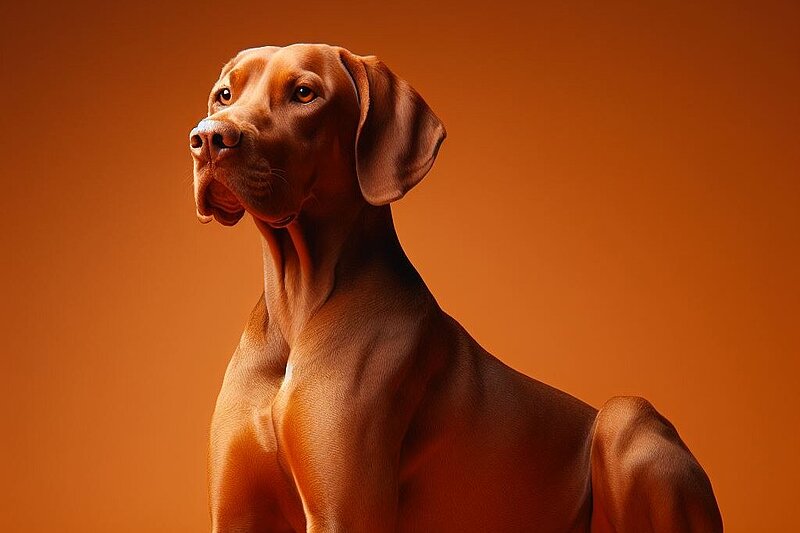The Short-haired Hungarian Pointing Dog: A versatile companion with tradition
The history of the Magyar Vizsla
The short-haired Hungarian Pointing Dog has an impressive history dating back to the Middle Ages. Originally, the breed was bred by the Hungarian Magyars to serve as a hunting dog. The combination of speed, endurance and an excellent nose made the Vizsla an indispensable companion when hunting feathered game and other game. The breed was almost wiped out during the 20th century, but dedicated breeders ensured that the Magyar Vizsla flourished again and is now valued worldwide.
Who is the Vizsla suitable for?
The short-haired Hungarian Pointing Dog is particularly suitable for active people. It loves exercise and needs plenty of exercise. Families with an active lifestyle who enjoy hiking, jogging or cycling will find this dog the perfect companion. The Vizsla is also ideal for hunters, as it has retained its original hunting skills to this day.
Character and nature of the Vizsla
The Magyar Vizsla is known for its friendly and affectionate character. It is extremely intelligent and eager to learn, which makes it an excellent training partner. These dogs are very social and love to spend time with their family. They are fond of children and usually get along well with other pets. Their alertness also makes them good watchdogs without being aggressive.
Appearance of the Magyar Vizsla
The short-haired Hungarian Pointing Dog has an elegant, muscular appearance. It has a short, dense and shiny coat that is usually a golden rust-brown color. The build is athletic, with a deep chest and strong limbs. The eyes of the Vizsla are almond-shaped and often have a warm, amber tone, which contributes to their charming expression.
Grooming and health
The Vizsla is relatively easy to care for. Its short coat requires only occasional brushing to remove loose hair and keep the skin healthy. Regular checking and cleaning of the ears and clipping of the claws are part of the basic care. In terms of health, the Vizsla is considered robust, but potential owners should watch out for hip dysplasia and epilepsy, which can occur in this breed.
Size and weight
An adult Magyar Vizsla reaches a shoulder height of around 54 to 64 cm and a weight of 20 to 30 kg. Males are usually slightly larger and heavier than females.
Exercise and exercise requirements
The Vizsla has a high need for exercise and needs plenty of physical and mental exercise every day. Long walks, jogging and playtime are a must. This breed is less suited to living in a small city apartment unless the dog gets enough outdoor exercise.
Training and education
Thanks to its intelligence and eagerness to learn, the Vizsla is easy to train. Consistent but loving training is the key to a well-behaved dog. Positive reinforcement works best with this sensitive breed. Early socialization is important to promote a self-confident and well-adjusted dog.
Behavior with children and other animals
The Vizsla is an excellent family dog. It is patient and affectionate with children. They generally get along well with other pets, especially if they are introduced to them from an early age. His social nature makes him a pleasant companion for both humans and animals.
Recognition and interesting facts
The Hungarian Short-haired Pointing Dog is recognized by the Fédération Cynologique Internationale (FCI) and belongs to Group 7, the Pointing Dogs. An interesting fact: the Vizsla is also very popular as a therapy dog, as its friendly and balanced nature helps it to support people in various therapeutic contexts.
